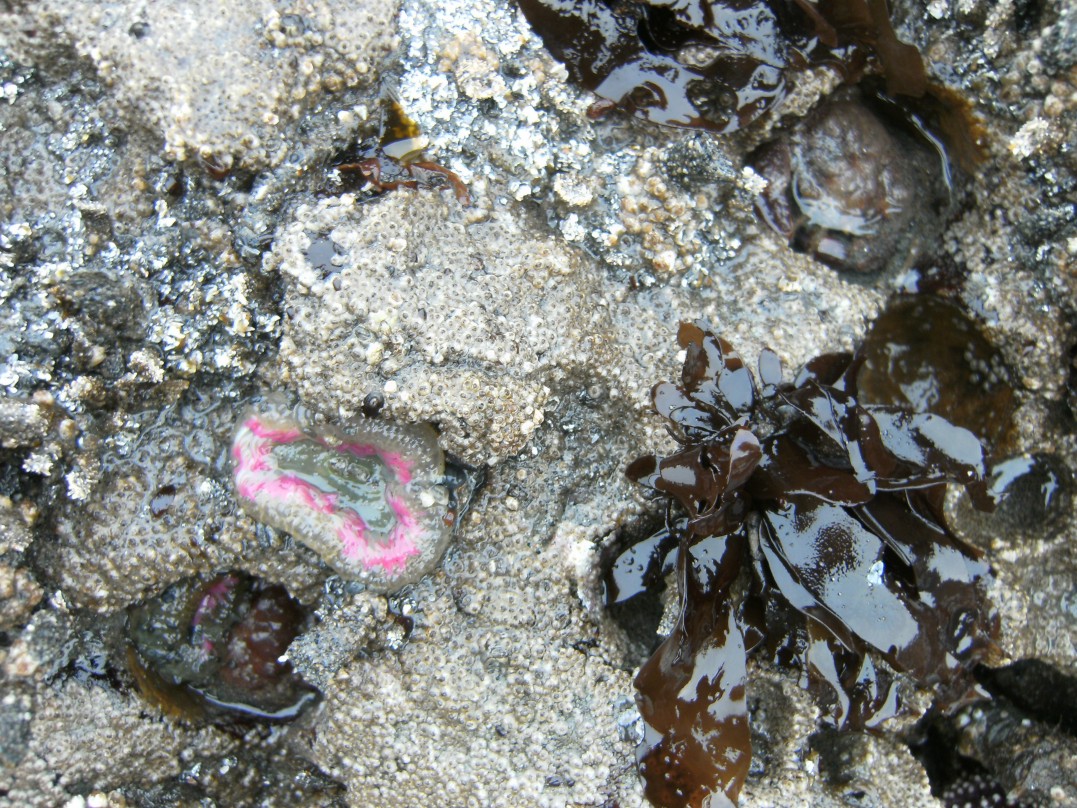Glebocarcinus oregonensis (Dana), Schweitzer and Feldmann, 2000)Common name(s): Pygmy rock crab, Hairy cancer crab, Oregon cancer crab, Oregon rock crab |
|
| Synonyms: Cancer oregonensis, Trichocera oregonensis, Platycarcinus recurvidens, Trichocarcinus oregonensis, Trichocarcinus recurvidens, Trichocarcinus walkeri | 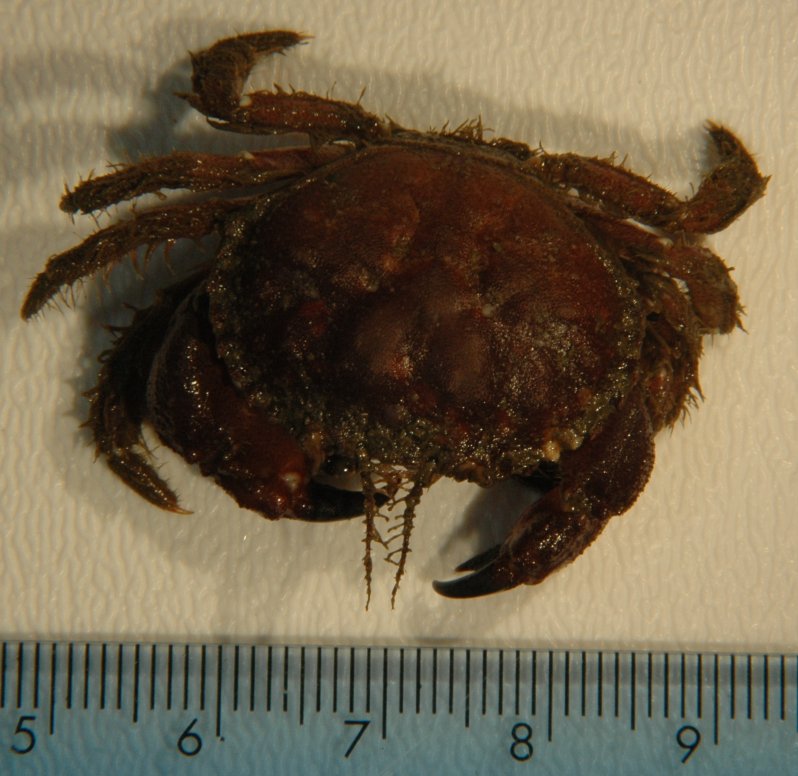 |
| Phylum Arthropoda
Subphylum Crustacea Class Malacostraca Subclass Eumalacostraca Superorder Eucarida Order Decapoda Suborder Pleocyemata Infraorder Brachyura Family Cancridae |
|
| Glebocarcinus oregonensis. Numbers on scale are centimeters. | |
| (Photo by: Dave Cowles, July 2005) | |
How to Distinguish
from
Similar Species: Glebocarcinus
branneri is also small but has spiny ridges and no tubercles
on the
chelae; plus is not as common. Lophopanopeus
bellus is similar size and shape, is found in
similar areas, and
has black claw tips and an oval carapace but does not have the 5 teeth
between the eyes characteristic of Cancer crabs, plus its carapace is
often
an off-white.
Note: Species formerly in genus Cancer have been
recently
subdivided into several genera (Ng
et al., 2008; Schweitzer
and Feldmann, 2010). Of our local genera, Cancer, Romaleon,
and Metacarcinus
have a carapace wider than long plus only scattered setae on the
carapace margins and legs while Glebocarcinus
has a carapace of approximately equal length and width, often with
granular regions and with setae along the edges; and setae on the outer
surface of the chela as well as on the legs. Metacarcinus
can be distinguished from Cancer
because Metacarcinus
has anterolateral carapace teeth which are distinct and sharp plus the
male has a rounded tip to the telson, while Cancer
has anterolateral carapace teeth which are low and lobed, separated by
deep fissures plus the male has a sharply pointed telson (Schram
and Ng, 2012). Romaleon
can be distinguished from Cancer
and Metacarcinus
because it has a distinct tooth on the anterior third of the
posterolateral margin of the carapace while the other two genera do not.
Geographical Range: Pribilof
Islands to
Palos Verdes, CA; uncommon S of Pt. Arena, CA. Common in the
north
but not common in the southern part of its range.
Depth Range: Intertidal to 436 m
Habitat: Often nestles in small holes such as dead barnacles and under rocks (photo). Often uses its rounded carapace to block the entrance to the hole.
Biology/Natural History: This crab is very common in the intertidal zone in small spaces under and between rocks, and also subtidally in dead barnacles. It emerges at night to feed mainly on small barnacles, but also on snails, bivalves, worms, and some green algae. Is an important predator on small Japanese oysters Crassostrea gigas. Males have larger chelipeds than do females. Predators include pacific cod, and occasionally river otter and red rock crab Cancer productus. May be found in "harems" of one male and several females in their crevices, especially during the summer breeding season (photo). Mating takes place after the females molt, and the males often carry females who are preparing to molt, and afterward until she has hardened. Ovigerous females are found in Puget Sound from November to April/May. May be infected by parasitic sacculinid barnacles. When disturbed outside its hole, this crab may fold its legs and roll like a stone.
Return to Main Page
References:
Dichotomous Keys:Coffin, 1952
Flora and Fairbanks, 1966
Hart, 1982
Kozloff 1987, 1996
Smith and Carlton, 1975
Wicksten, 2009
General References:
Harbo,
1999
Jensen,
1995
Johnson
and Snook, 1955
Kozloff,
1993
McConnaughey
and McConnaughey, 1985
Morris
et al., 1980
Niesen,
1997
O'Clair
and O'Clair, 1998
Ricketts
et al., 1985
Sept,
1999
Scientific
Articles:
Burnett, Nicole, 2024: A practical identification guide to the zoeae of the invasive European green crab, Carcinus maenas (Linnaeus, 1758) (Decapoda: Brachyura: Carcinidae), and to the zoeae of the families of brachyuran crabs in Washington state, USA. Journal of Crustacean Biology 44:4. doi.org/10.1093/jcbiol/ruae064
Ng,
P.K.L., D. Guinot, and P.J.F. Davie, 2008.
Systema Brachyurorum: part I. An annotated checklist of
extant
brachyuran crabs of the world. Raffles Bulletin of Zoology,
Supplement 17 pp. 1-286
Schram,
Frederick R. and Peter K.L. Ng, 2012. What is
Cancer? Journal of Crustacean Biology 32:4 pp. 665-672
Schweitzer,
C.F. and R.M. Feldmann, 2000.
Re-evaluation of the Cancridae Latereille, 1802 (Decapoda: Brachyura)
including three new genera and three new species.
Contributions
to Zoology 69:4 pp. 223-250
General Notes and Observations: Locations, abundances, unusual behaviors:
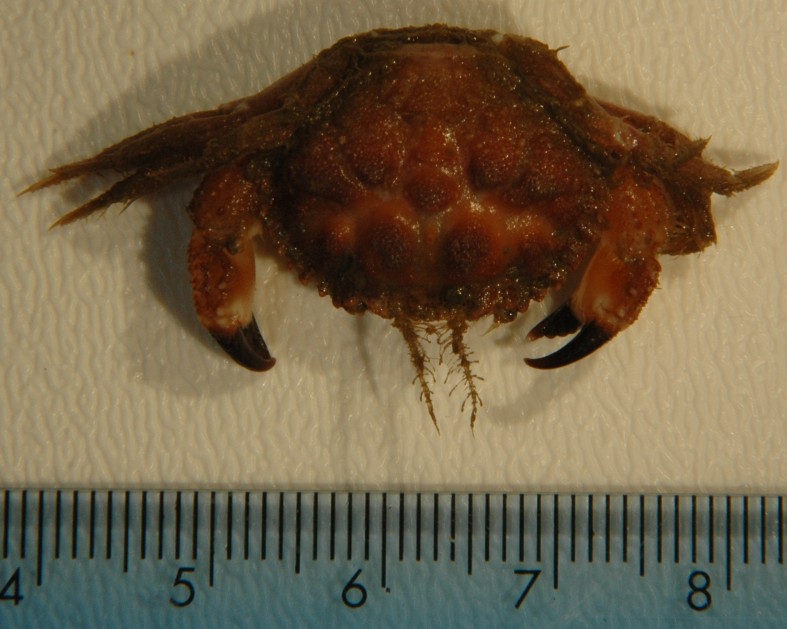
Some individuals are lighter colored, as this individual.
Numbers
on scale are centimeters. Photo by Dave Cowles, July 2005.
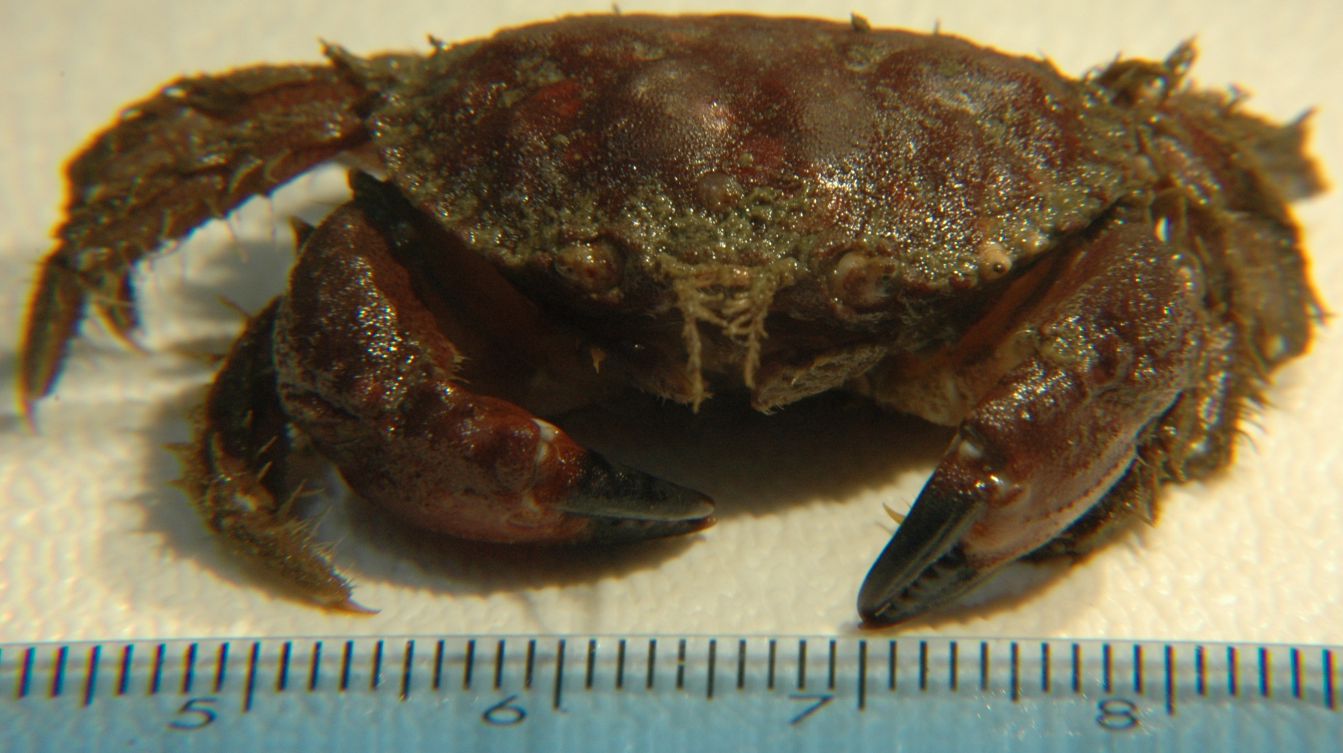
Front-on view. Note the tubercles on the dorsal margins of
the
chelipeds
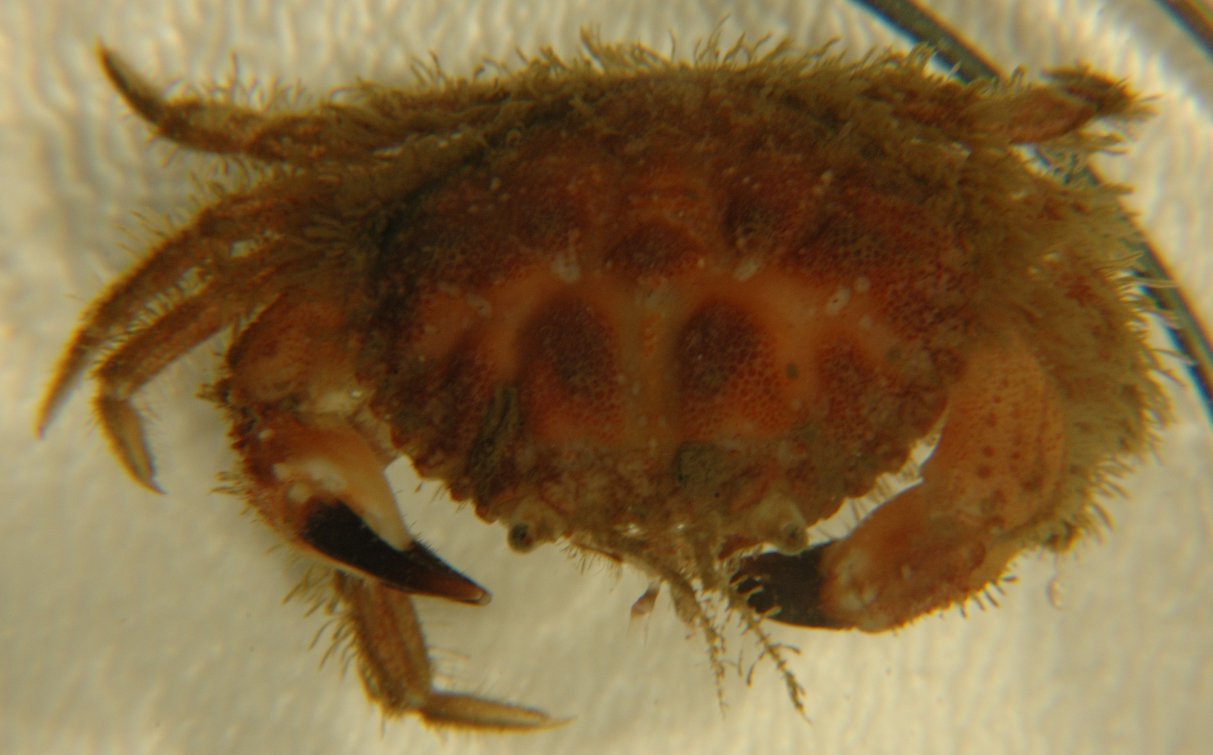
The many setae are most evident when the animal is underwater, as in
this picture.
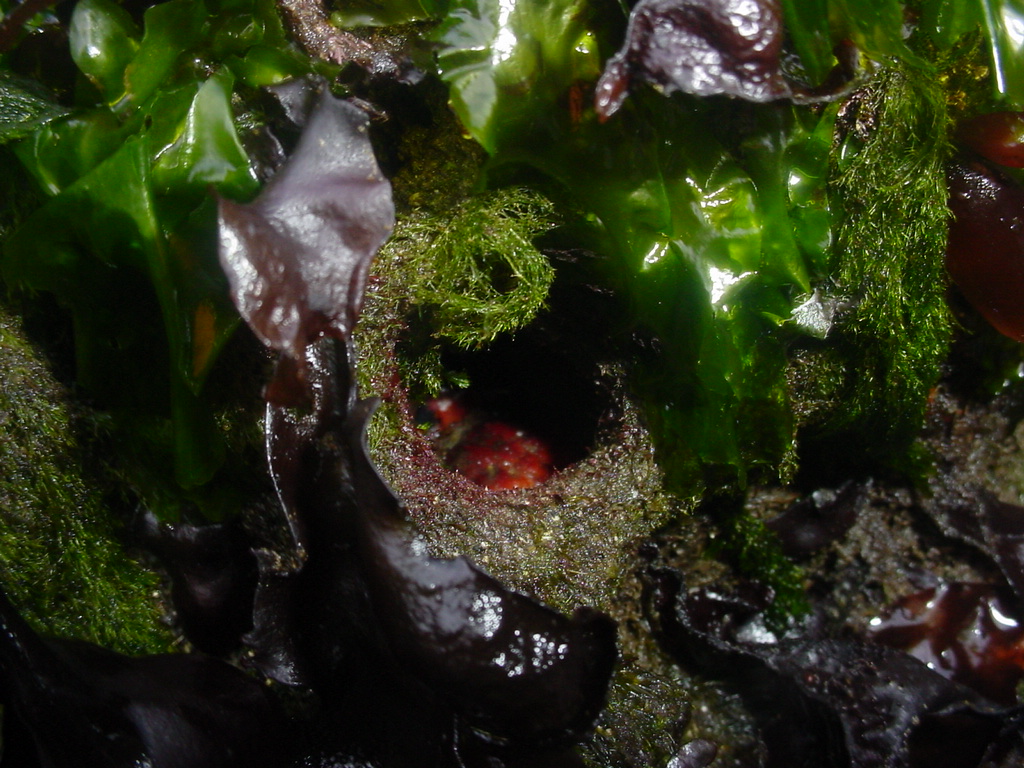
This species often nestles in holes in rocks, as seen in this photo
from Cape Flattery, WA. Often a male and female nestle in the
same
hole.
Two
individuals are nestling in adjacent holes (top right and bottom left)
in this intertidal rock at Beach #4, Kalaloch. The bottom
left
hole is also occupied by an anemone. Photo by Dave Cowles,
July
2012.
 |
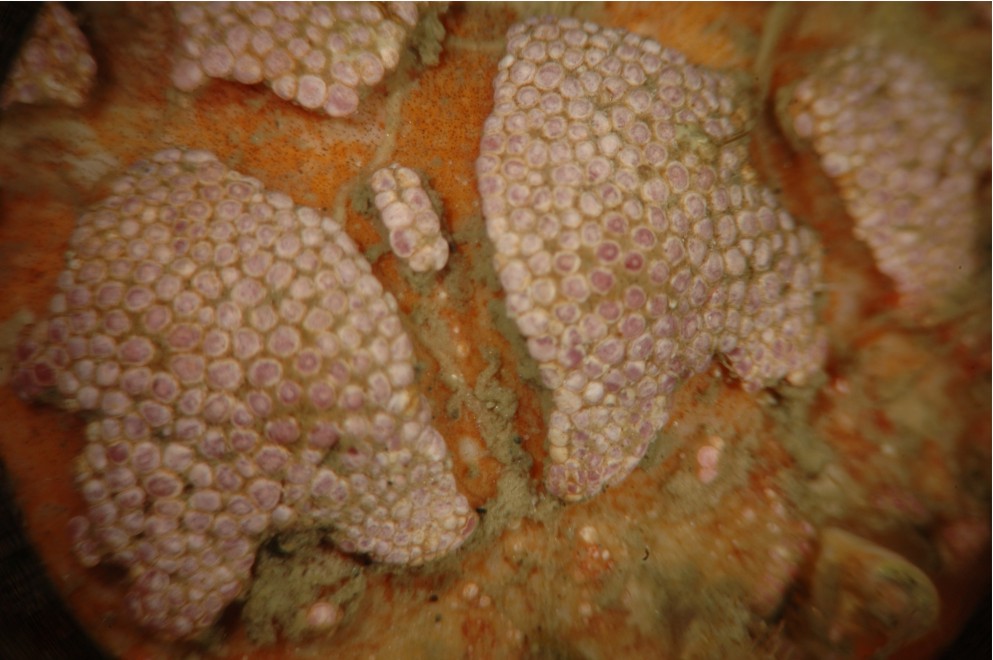 |
| Some Glebocarcinus oregonensis, especially larger and deepliving individuals, seem to have a very pronounced pattern clusters of raised tubercles on the carapace. This individual was caught at 100 m depth in the San Juan Channel. | Here is a closeup of the two patches of tubercles from the individual to the left, just behind the head. The tubercles appear to be an integral part of the exoskeleton but are sharply raised above it. As a whole, the size and shape of the individual tubercles reminds me of the bumps present on the large chelae of the lithodid crab Oedignathus inermis. I wonder whether they are simply raised portions of the carapace or actual thickenings, and whether they may function to make the exoskeleton stronger and more crush-proof. |
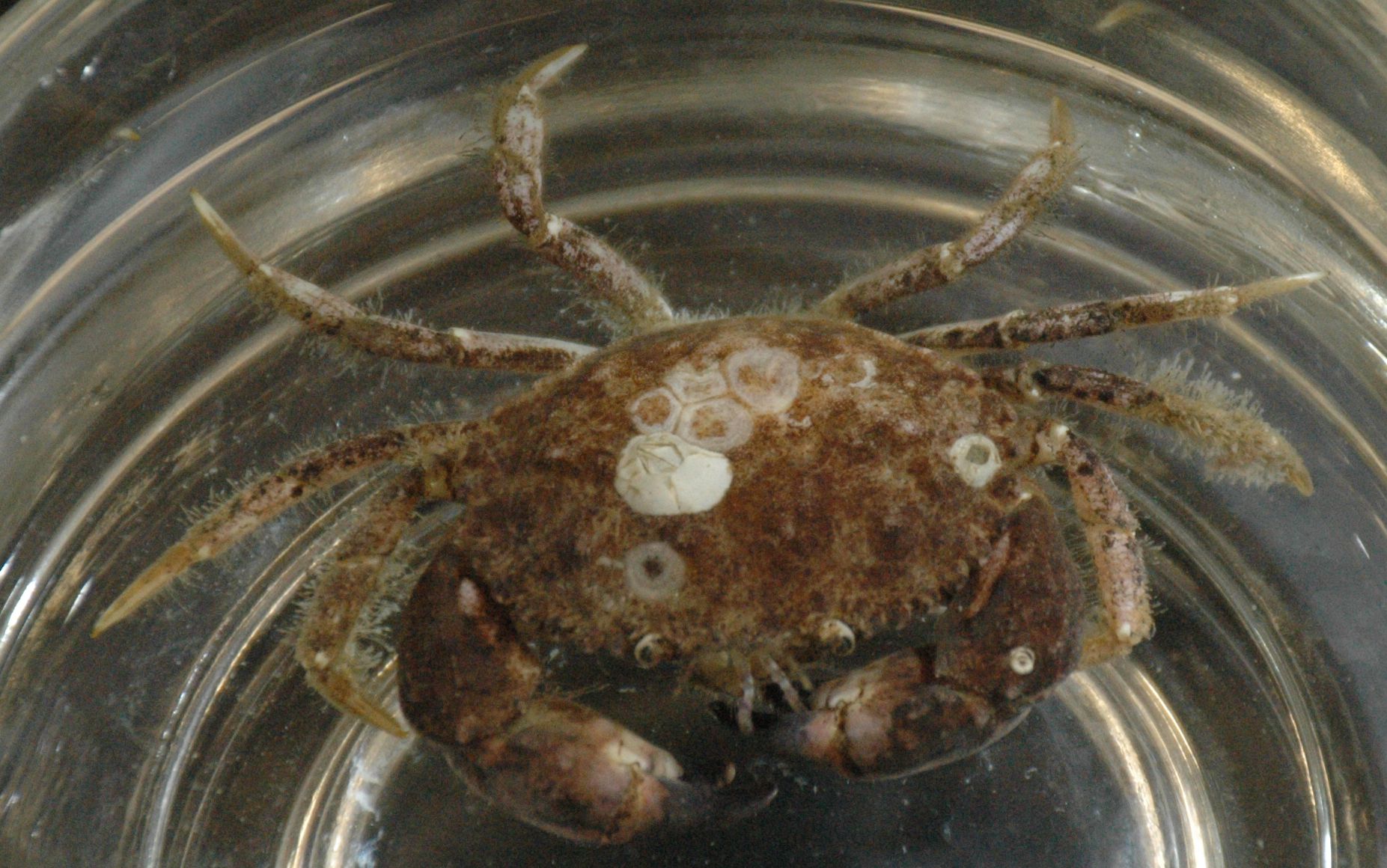
I found this individual in the Rosario Seawater
reservoir
tank before the seawater system was turned on in June 2016.
To get there, it would have had to have passed through the
seawater intake screens as a larve less than 1 mm in diameter in summer
2015. At the end of that summer it would have been settled in
the bottom 5-10 cm of water in the tank when the rest of the tank was
drained at the end of summer. From that time until summer
2016 it would have survived over 9 months in the total darkness of the
tank, in 5-10 cm of water with 1-2 cm of silt on the bottom.
Carapace width 3.5 cm. The barnacle on the crab's
carapace is alive as well.
Photo by Dave Cowles, June 2016.
Authors and Editors of Page:
Dave Cowles (2005): Created original page
